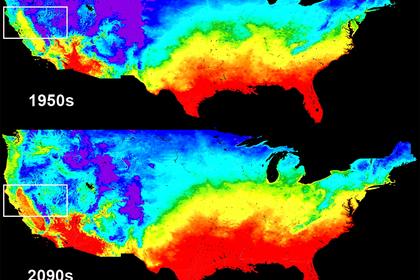
2021-02-05 12:40:00
OIL REMAINS THE FUEL
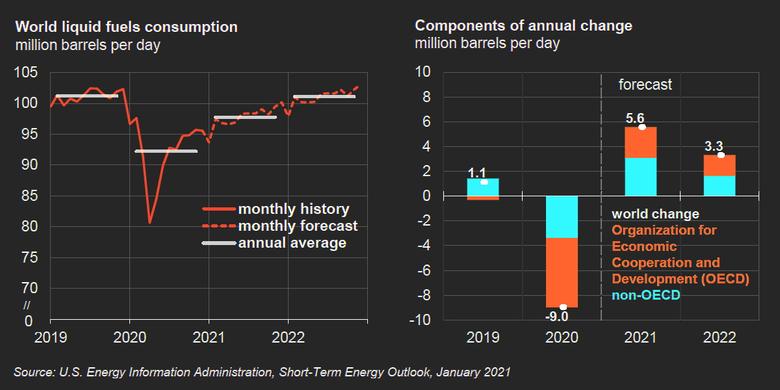
U.S. EIA - February 3, 2021 - ANNUAL ENERGY OUTLOOK 2021
HIGHLIGHTS
Returning to 2019 levels of US energy consumption takes years; energy related carbon dioxide emissions fall further before leveling off or rising
- Energy consumption fell faster than gross domestic product in 2020, and the pace at which both will return to 2019 levels remains uncertain.
- Petroleum remains the most-consumed fuel in the United States, as energy-related carbon dioxide emissions dip through 2035 before climbing in later years.
- The energy intensity of the U.S. economy continues to fall as end-use sector intensities decline at varying rates.
Renewable energy incentives and falling technology costs support robust competition with natural gas as coal and nuclear power decrease in the electricity mix
- Electricity demand grows at a modest rate throughout the projection period.
- As coal and nuclear generating capacity retires, new capacity additions come largely from natural gas and renewable technologies.
- Renewable electricity generation increases more rapidly than overall electricity demand through 2050.
- The cost-competiveness of solar photovoltaic and natural gas combined-cycle units leads to capacity additions.
Continuing record-high domestic energy production supports natural gas exports but does not necessarily mean growth in the US trade balance in petroleum products
- Amid uncertainty, the United States continues to be an important global supplier of crude oil and natural gas.
- Motor gasoline remains predominant despite a growing mix of technologies in passenger vehicles.
- Natural gas consumption growth between 2020 and 2050 is concentrated in two areas: exports and industrial use.
- The amount of crude oil processed at U.S. refineries decreased in 2020 because of lower demand for transportation fuels, but it returns to 2019 levels by 2025.
- Consumption of biofuels as a share of the domestic fuel mix increases in AEO2021.
-----
Earlier:

2021, February, 1, 12:10:00
U.S. GAS MORATORIUM
Following the recent issuance of a 60-day moratorium on new drilling permits and land leases on federal land, President Joe Biden Jan. 27 signed an executive order that would suspend all new federal oil and gas leases,
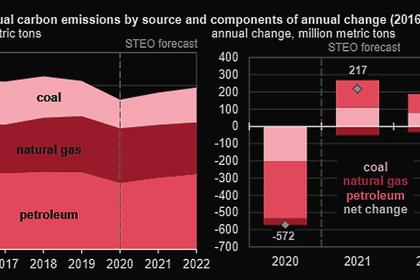
2021, January, 27, 13:55:00
U.S. CO2 EMISSIONS WILL UP
Economic growth and the lessening of pandemic-related restrictions result in more energy consumption and associated CO2 emissions. EIA expects total energy-related CO2 emissions to increase to 4.8 billion metric tons in 2021 and 4.9 billion metric tons in 2022.
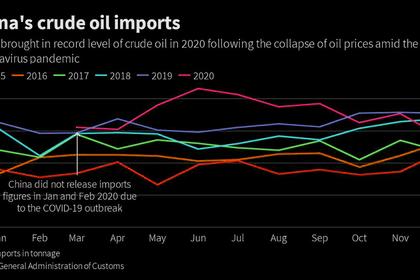
2021, January, 20, 14:35:00
U.S. OIL FOR CHINA UP
China had suspended crude imports from the US over December 2019-April 2020 due to the trade tensions between Beijing and Washington.
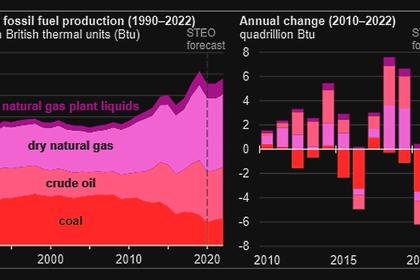
2021, January, 19, 13:45:00
U.S. FOSSIL FUEL WILL UP
U.S. production of all fossil fuels—crude oil, coal, dry natural gas, and natural gas plant liquids (NGPL)—to increase in 2022, but forecast fossil fuel production will remain lower than the 2019 peak.
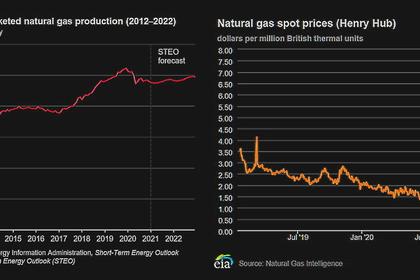
2021, January, 15, 11:40:00
U.S. GAS PRODUCTION UPDOWN
U.S. marketed gas production for 2021 will fall 2% and average 96.2 billion cubic feet per day (Bcf/d).
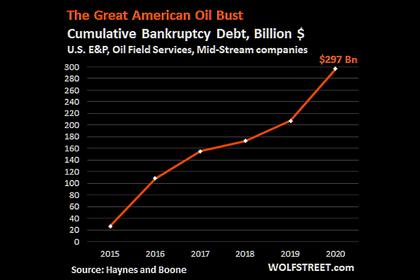
2020, December, 18, 11:50:00
U.S. OIL COMPANIES BANKRUPTCIES
Many oil companies that were hit hard in 2015 from the sudden drop in oil prices to levels not seen in years at the time, were able to hold on initially.







